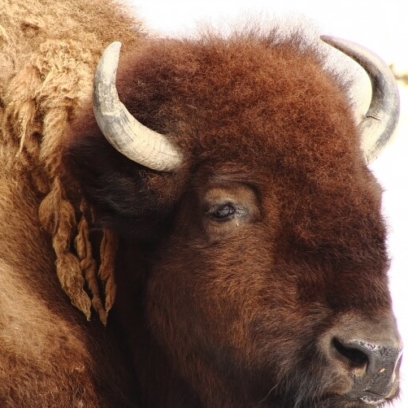Black Vulture
Coragyps atratusGeographic Region: Widespread across the southern U.S. (especially in the east), Mexico, Central America, and much of South America
Isn’t it Wild? Special enzymes in vultures’ digestive systems neutralize toxins and kill pathogens, allowing them to eat rotting meat without getting sick.

Length: 2‑2.5 ft
Wingspan: About 5 ft
Nebraska Premium Feline diet, mice, rats, capelin
Least Concern
Wild Woodlands
Exhibit information
Discover the amazing creatures that call North America home! Watch the bison graze, the pronghorn demonstrate their speed, and the wild turkey show off his courtship displays! You can even spy the only two venomous snakes in New England–the northern copperhead and timber rattlesnake, and learn about their crucial role in the ecosystem. Most of the species within the North American section are great conservation success stories, including the shy red wolf.
Red wolves were listed as Extinct in the Wild by 1980. Through the collaboration of the US Fish & Wildlife Service and the Associations of Zoos and Aquariums’ (AZA) Red Wolf Species Survival Plan (SSP), the last 14 remaining wild red wolves were brought into zoos to establish a captive breeding program with the primary objective of forming the foundation of a wild population through reintroduction back to the wild. Even though breeding is a main component, our red wolves also help educate the public on the plight of their wild counterparts.
Thanks to the collaborative efforts of these partner facilities across the United States, the captive red wolf population has once again risen steadily to nearly 250 wolves! Learn all about how these animals have been saved from extinction.




